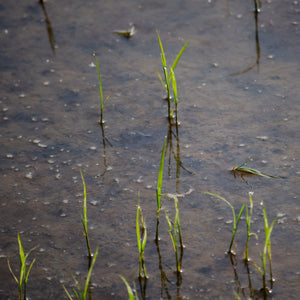Rice is one of the oldest and most widespread cereals in the world, with an extraordinary variety of species and subspecies that have adapted to different climatic and environmental conditions. The conservation of this biodiversity is essential to ensure global food security, and seed banks play a crucial role in this process. In this article, we will explore the different varieties of rice around the world and the role of seed banks in preserving this precious resource.
The diversity of rice varieties
There are over 100,000 known varieties of rice, each with unique characteristics that make them suitable for specific climatic and soil conditions. The main cultivated species are Oryza sativa, with the main subspecies, called Indica and Japonica.
- Indica : This subspecies is dominant in tropical and subtropical climates, such as those of India, southern China, and Southeast Asia. Indica strains tend to have long, thin kernels and are suited to alluvial, moist soils.
- Japonica : Grown in temperate climates, such as Japan, Italy, South Korea and parts of China, Japonica produces short, round grains, ideal for making dishes such as sushi.
Seed Banks: Guardians of Biodiversity
Seed banks are institutions that collect, conserve, and manage plant genetic resources, including rice seeds, to ensure their availability for future generations. One of the most important rice seed banks is the International Rice Research Institute (IRRI) located in the Philippines.
- IRRI : Founded in 1960, IRRI is a research center dedicated to the development of advanced rice breeding technologies. The IRRI seed bank conserves over 140,000 rice varieties from all over the world, representing an invaluable heritage of genetic diversity.
- Long-term storage : Seeds are stored under controlled temperature and humidity conditions to preserve their viability. These seeds can be used for scientific research, variety improvement and crop restoration in the event of natural disasters.
The Importance of Rice Diversity
Rice variety diversity is essential to address global challenges such as climate change, plant diseases and food security. Different varieties offer unique characteristics, such as drought resistance, salt tolerance and disease resistance, which are crucial to developing resilient crops.
Conclusions
Rice species diversity and seed conservation are key to ensuring sustainable and resilient agriculture. Seed banks, such as IRRI, play a crucial role in preserving this genetic diversity, providing an invaluable resource for research and development of new rice varieties.
Understanding and valuing the diversity of rice varieties not only helps us preserve our agricultural heritage, but is also essential to ensure food security for future generations. With the ever-evolving environmental and climate challenges, protecting rice biodiversity remains a key priority.

